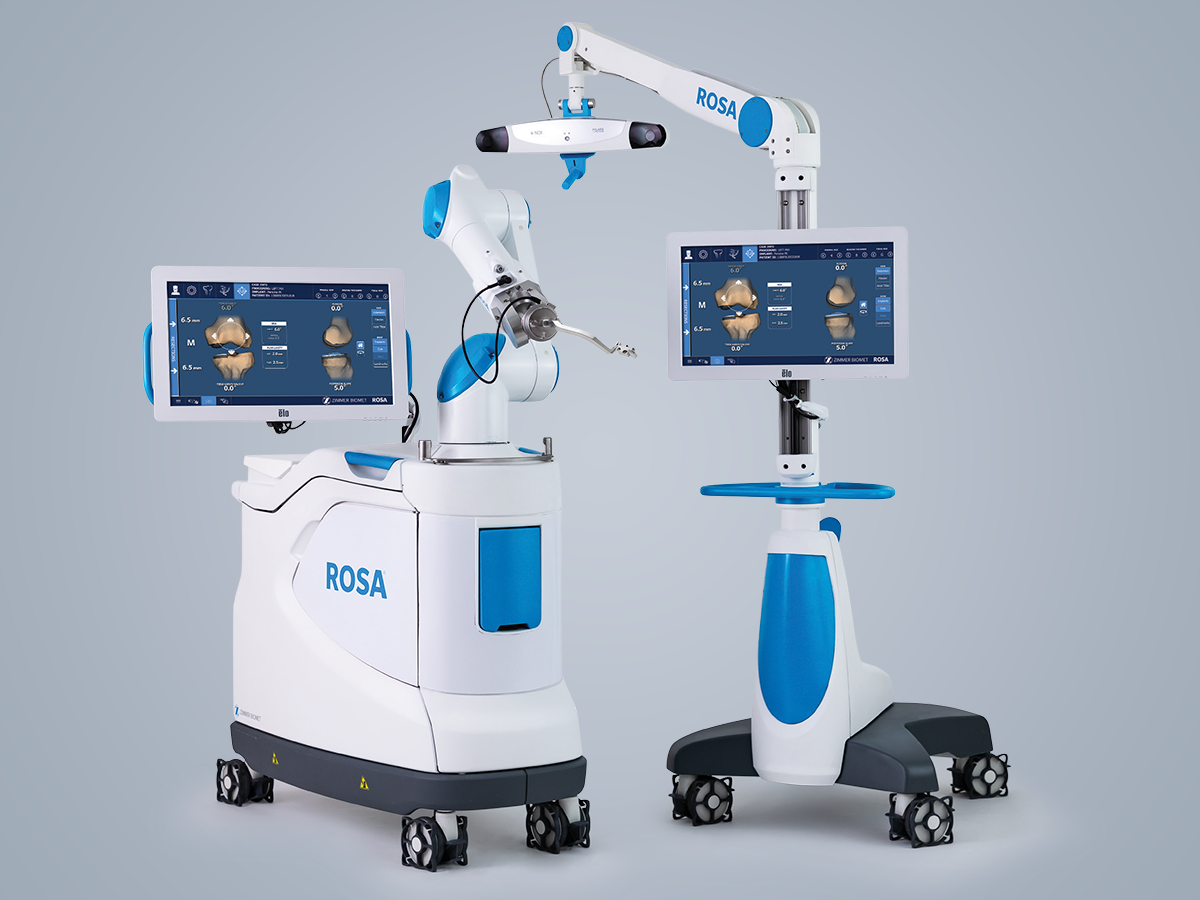Team Cafferky Is Now Providing Robotic Partial Knee Replacements
Last month, Dr. Cafferky at his team performed one of the very first ROSA-assisted medial unicompartmental knee replacements in the United States at Vail Health!
ROSA stands for Robotic Surgical Assistant and is designed to help orthopaedic joint replacement surgeons tailor the placement of your knee implant to your unique anatomy. Until recently, the ROSA knee system was only used for total knee replacements.
Here’s what you need to know about this latest innovation in orthopaedic joints!
Is Robotic Partial Knee Surgery Safe?
ROSA Partial Knee is a system developed by Zimmer Biomet, a medical device company founded in 1927.
The ROSA Partial Knee System is the latest addition to ROSA Robotics, Zimmer Biomet's multiple application robotics platform. ROSA Robotics includes the ROSA Knee System for total knee replacement surgery, which launched in 2019.
Here are some quick facts about the ROSA Partial Knee System:
Cleared By the FDA: The U.S. Food and Drug Administration cleared the ROSA Partial Knee System on April 20, 2021. This means that Zimmer Biomet has shown that the ROSA Partial Knee System is equivalent to other robotic surgical assistants on the market.
Designed to Aid, Not Replace the Surgeon: The ROSA Partial Knee System is designed to provide the surgeon with real-time data that allows the surgeon to place the partial knee implant with greater accuracy.
Surgical Skill Is Still A Necessity: The ROSA Partial Knee System collects information on the patient’s soft tissue and bone health. The surgeon still performs the joint replacement procedure and is in control of the robotic arm. Robotic knee systems are not a replacement for operating room experience, meaning it’s important to find a joint specialist with a track record of success.
As with all surgical procedures, complications can happen. However, a ROSA Partial Knee Replacement is just as safe as a traditional partial knee replacement. Complications are the same for both procedures - including pain, damage to surrounding soft tissues, bleeding, or infection.
Who’s a Candidate for Robotic Partial Knee Surgery?
In 2019, roughly 90,000 partial knee replacement procedures were performed in the United States. This surgerical number will only continue to grow over the coming decade.
People who undergo a partial knee replacement often suffer from a form of knee osteoarthritis. Knee osteoarthritis can cause:
Inflammation
Pain
Grinding sensations
Reduced range of motion
Instability
Candidates for partial knee replacement surgery are usually:
Suffering from medial or lateral knee osteoarthritis
Young, more active patients
Experiencing no deformity or severe stiffness
If you qualify for a partial knee replacement, you qualify for robotic partial knee surgery. There are no additional qualifications aside from patient consent.
Contact Dr. Cafferky About Your Robotic Partial Knee Replacement Today!
If you’re looking for an orthopaedic joint specialist who can execute your partial knee replacement flawlessly, look no further than Dr. Nathan Cafferky.
As one of the first orthopaedic surgeons to perform a ROSA-assisted partial knee replacement in the United States, Dr.Cafferky and his team at The Steadman Clinic are uniquely qualified to determine if the ROSA Partial Knee System is right for you.
Schedule your consultation today by calling (970) 476-1100 or submit your request via our online platform.




